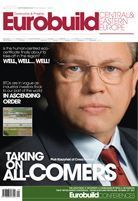‘Multichannel or die’ may be a brash, even melodramatic, slogan, but it accurately conveys the current need to embrace sales across various channels. Brick-and-mortar stores are in a rush to get online sales up and running, while internet retailers are experimenting by opening real stores. People are now able to shop all day and night using computers and laptops, and can put products in their virtual shopping baskets on their tablets or smartphones 24/7. We love to be able to shop around-the-clock, but we also like to go shopping to pick up our purchases. And when we are there, we often go further – we make more purchases. Click & collect is one of the basic services for multichannel sales that is now available across the world – but in Poland it is only just taking its first tentative steps.
From gadgets to pills
According to the ‘Omnichannel in Poland’ report recently published by Knight Frank, half of the companies surveyed (120 large retail






























































